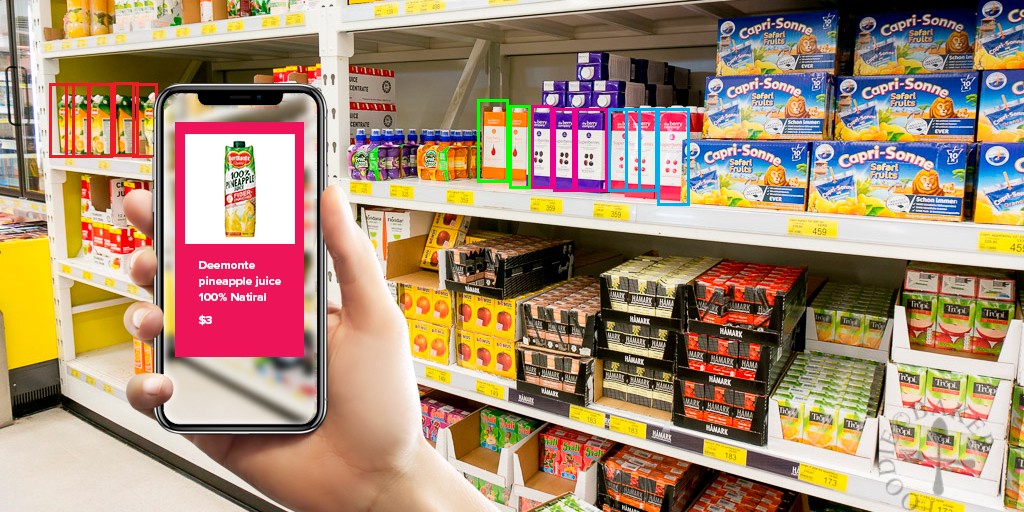In today's retail landscape, consumer experience stands at the forefront of business success. With the advent of advanced technology, retailers are leveraging innovative solutions to enhance customer engagement and satisfaction. One such groundbreaking technology is product recognition, which is revolutionizing the way consumers interact with brands and products. In this article, we delve into the transformative power of product recognition and explore its impact on reshaping the consumer experience.
What is Amazon Rekognition?
Amazon Rekognition emerges as a pioneering force in the realm of product recognition. Developed by tech giant Amazon, Rekognition is an advanced deep learning-based image and video analysis service. With its powerful capabilities, Rekognition allows businesses to automatically identify objects, scenes, and faces within images and videos. Moreover, it enables accurate and efficient product recognition, empowering retailers to streamline operations and enhance customer experiences.
5 Steps to Integrate a Product Recognition System
Integrating a product recognition system into retail operations involves several key steps to ensure seamless implementation and optimal performance. Here's a comprehensive guide to integrating a product recognition system:
Step 1: Define Objectives and Use Cases: Before embarking on the integration process, it's essential to clearly define the objectives and use cases for product recognition within your retail environment. Whether it's improving inventory management, enhancing personalized recommendations, or enabling seamless checkout experiences, identifying specific goals will guide the implementation strategy.
Step 2: Choose the Right Technology: Selecting the appropriate product recognition technology is crucial for achieving desired outcomes. Platforms like Amazon Rekognition offer comprehensive solutions for image and video analysis, while other options such as Deep Vision Brand Recognition API available on AWS Marketplace provide specialized functionalities tailored to retail needs. Evaluate features, scalability, and compatibility with existing systems to make an informed decision.
Step 3: Data Collection and Training: Building an effective product recognition system relies heavily on high-quality data collection and model training. Gather diverse datasets comprising images of various products, angles, and lighting conditions to ensure robust model performance. Utilize machine learning techniques to train the model on labeled data, refining its ability to accurately identify products and extract relevant information.
Step 4: Integration with Existing Systems: Seamlessly integrate the product recognition system with existing retail infrastructure to leverage its capabilities across different touchpoints. Whether it's incorporating recognition functionalities into mobile apps, POS terminals, or online platforms, ensure smooth interoperability to deliver consistent and unified consumer experiences.
Step 5: Continuous Monitoring and Optimization: The integration process doesn't end with deployment; continuous monitoring and optimization are essential for maintaining peak performance. Regularly evaluate the system's accuracy, efficiency, and relevance to evolving consumer preferences. Implement feedback loops and iterative improvements to refine the product recognition algorithms and adapt to changing market dynamics.
Deep Vision Brand Recognition API - AWS Marketplace
Deep Vision Brand Recognition API, available on AWS Marketplace, offers a comprehensive solution for brand and product recognition in retail environments. Leveraging cutting-edge machine learning algorithms, this API enables retailers to identify brands, products, and logos within images and videos with unparalleled accuracy and speed. By integrating Deep Vision Brand Recognition API into their operations, retailers can unlock a myriad of benefits, including:
- Enhanced Product Discovery: Enable customers to easily discover products by accurately identifying brands and logos within images and videos.
- Personalized Recommendations: Tailor recommendations based on recognized brands and products, providing shoppers with relevant and engaging content.
- Improved Inventory Management: Optimize inventory tracking and management processes by automating product recognition across warehouses and stores.
- Seamless Checkout Experiences: Facilitate frictionless checkout experiences by enabling instant product identification and pricing verification.
Image Recognition Software, ML Image & Video Analysis
In addition to brand-specific solutions like Deep Vision Brand Recognition API, retailers can also leverage image recognition software and machine learning-based image and video analysis tools to enhance product recognition capabilities. These versatile platforms offer a wide range of functionalities, including object detection, scene recognition, and content analysis, empowering retailers to extract valuable insights from visual data.


No comments yet